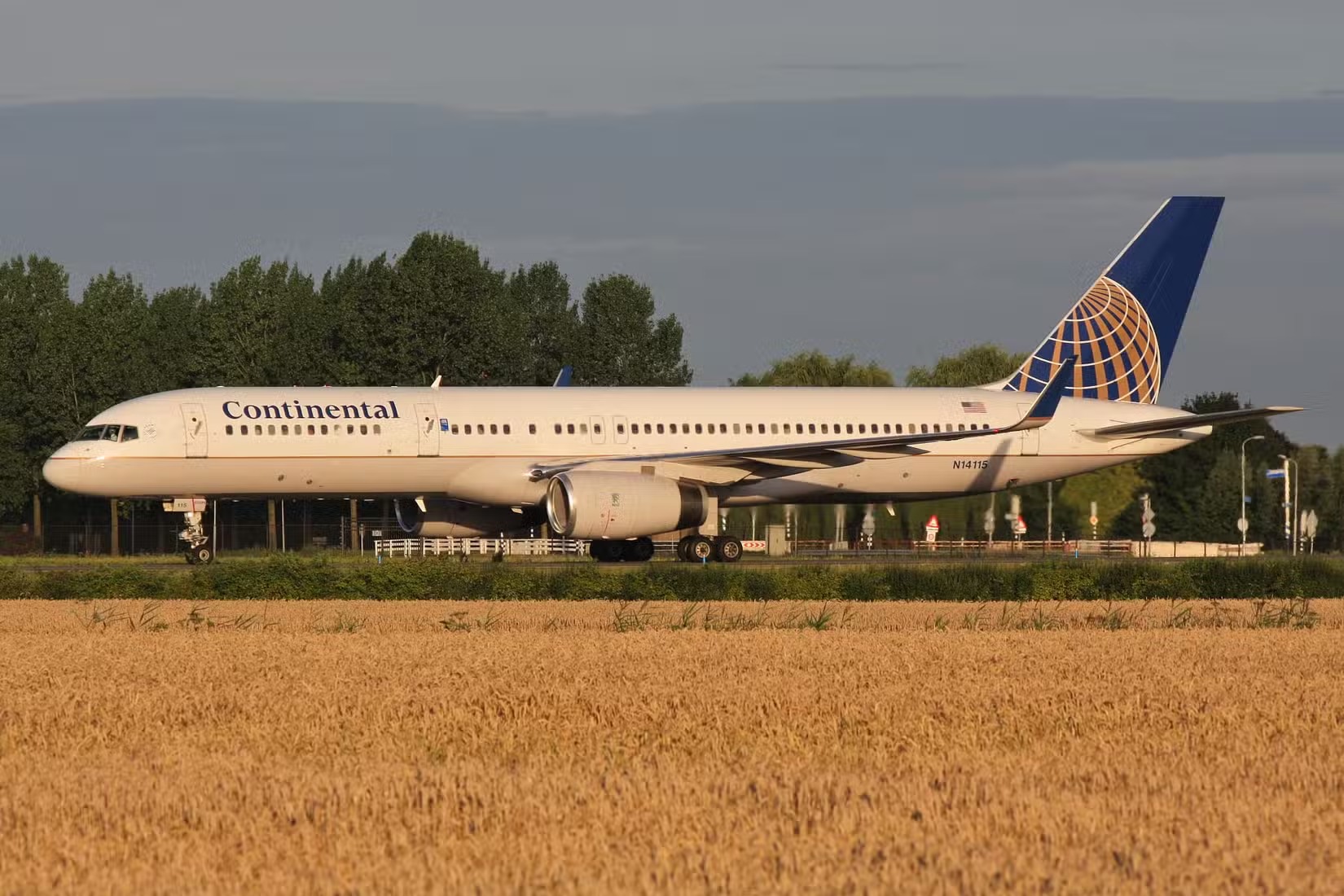Belfast is a city with abundant transport links, and two airports currently serve the Northern Irish capital. Belfast City Airport (BHD) primarily handles regional and full-service airlines, while Belfast International (BFS) is the place to go for low-cost and leisure traffic. However, in the not-too-distant past, the latter of these facilities also handled long-haul flights, boasting multiple US routes.
Continental Airlines’ Newark route
In terms of Belfast International Airport’s 21st-century transatlantic connections, a major development occurred in 2005 when Continental Airlines came to town. The American carrier launched a non-stop route to the Northern Irish capital city from its US East Coast hub at Newark Liberty International Airport (EWR), with Cirium, an aviation analytics company, showing that the flights began in May of that year.

Photo: Bjoern Wylezich | Shutterstock
The airline operated its Belfast flights using 172-seat Boeing 757-200 aircraft, with the twinjet offering the perfect compromise between range and capacity on the route. From June onwards, the services operated on a daily base, although the frequency was reduced in November and December of 2005, with just 22 flights operating in each direction between Newark and Belfast during those months.

Photo: Bjoern Wylezich | Shutterstock
In the years that followed, these flights continued to operate almost daily, with 332 services flown in each direction in 2006, and the figure rising to 338 in 2007. 2008 saw further growth, with the figure rising to 348 flights each way, before dropping back down to 330 in 2009. While the numbers continued to fall in the early 2010s, this occurred slowly, with 300+ flights remaining the norm for several years.
United takes over
The route underwent a minor change in 2012, when Continental Airlines was merged into fellow US giant United. Continental’s last Belfast flights occurred in March of that year, with United Airlines picking up where they left off straight away to give passengers on the route a seamless operational transition. The Boeing 757-200 remained the aircraft of choice, although, by then, the examples used had 178 seats.
Despite the easy transition from Continental to United on the Newark-Belfast route, the latter’s service frequencies were not quite on par with those offered by the former carrier. In 2013, its first full calendar year of service on the corridor, United operated 281 flights in each direction, with the figure only climbing slightly to 284 in 2014. This total fell to 244 in 2015, although 2016 rose to 275 flights.
However, this would be the last full year of operations for United’s Newark-Belfast route, which ceased to run in January 2017. According to the BBC, United Airlines chose to remove the route from its schedules due to its poor financial performance, with the carrier stating that it would “contact customers with bookings for flights beyond [January 9th] to provide refunds and re-accommodate where possible.”

Photo: A Periam Photography | Shutterstock
Interestingly, the Belfast Telegraph reported at the time that a bailout package worth £9 million (£12.3 million or $15.4 million) today had been offered in 2016 to help keep the route afloat. However, amid fears that the money would break EU rules concerning state aid, United ultimately opted to withdraw its services on the route, removing what had been a vital transatlantic connection for more than a decade.
Norwegian’s transatlantic experiment
Later in 2017, low-cost carrier Norwegian Air looked to fill the gap left by the departure of United Airlines by launching two routes from Belfast International Airport to the US East Coast. These served auxiliary facilities rather than major hubs, with the airline’s Boeing 737 aircraft flying from the Northern Irish capital city to New York Stewart International Airport (SWF) and Providence, Rhode Island (PVD).

These services began in July of 2017, with Norwegian operating 70 return trips to Stewart by the end of the year, and 35 to Providence, with the latter airport serving as an alternative gateway to Boston. According to the Belfast Telegraph, ticket prices for these flights started as low as £69 (£91 or $114 today). However, this wasn’t enough to attract sufficient passengers to keep the route going.
Indeed, the flights ended up lasting little more than a year, with demand prompting Norwegian to terminate the two routes in October of 2018. A spokesperson for the budget airline explained at the time that “following a comprehensive review of our services from Belfast in response to customer demand, we have decided to withdraw our routes from Belfast to the New York and Boston areas.”
Leisure corridors
Away from the northeast corridor of the US, long-haul leisure flights to Florida also used to be a key market for Belfast International’s transatlantic travelers. Perhaps most notably, Virgin Atlantic offered seasonal flights to Orlando International Airport (MCO) from 2015, with its double-decker Boeing 747-400 quadjets even serving the route. However, these last operated in 2022 using the Airbus A330-300.

Photo: Abdul N Quraishi – Abs | Shutterstock
Thomas Cook also served this route with its twin-engine A330-200 widebodies until 2019, alongside occasional flights to Harry Reid International Airport (LAS) in Las Vegas, Nevada. Interestingly, the carrier’s transatlantic operations from Belfast also served Cancún International Airport (CUN) in Mexico. However, in recent years, the only offering has been TUI to Orlando Melbourne (MLB) with:
| 2023 | Four return trips with the Boeing 787-9 |
| 2024 | Eight return trips with the Boeing 787-9 |
New prospects?
Despite the airport’s current minimal transatlantic footprint, Belfast International has not given up on securing new routes across the pond. Indeed, the Irish News reported just last month that its CEO was actively engaging with airlines with the goal of increasing its connectivity on this front. With air travel as a whole continuing to grow in the post-pandemic era, it will be interesting to see if this works.
Source: Simple Flying

Warning: Illegal string offset 'cookies' in /home/u623323914/domains/eng.bayviet.com.vn/public_html/wp-includes/comment-template.php on line 2564